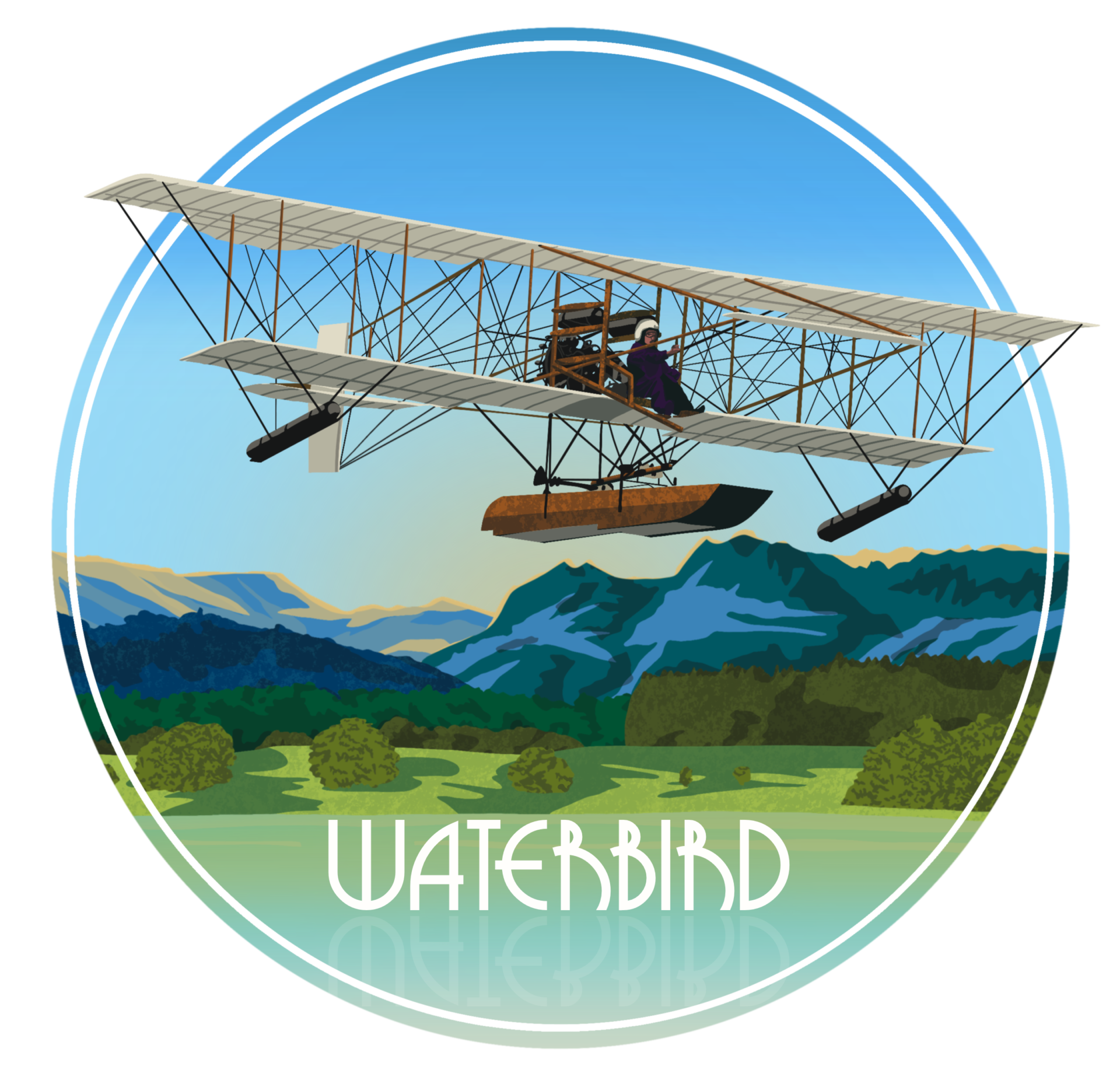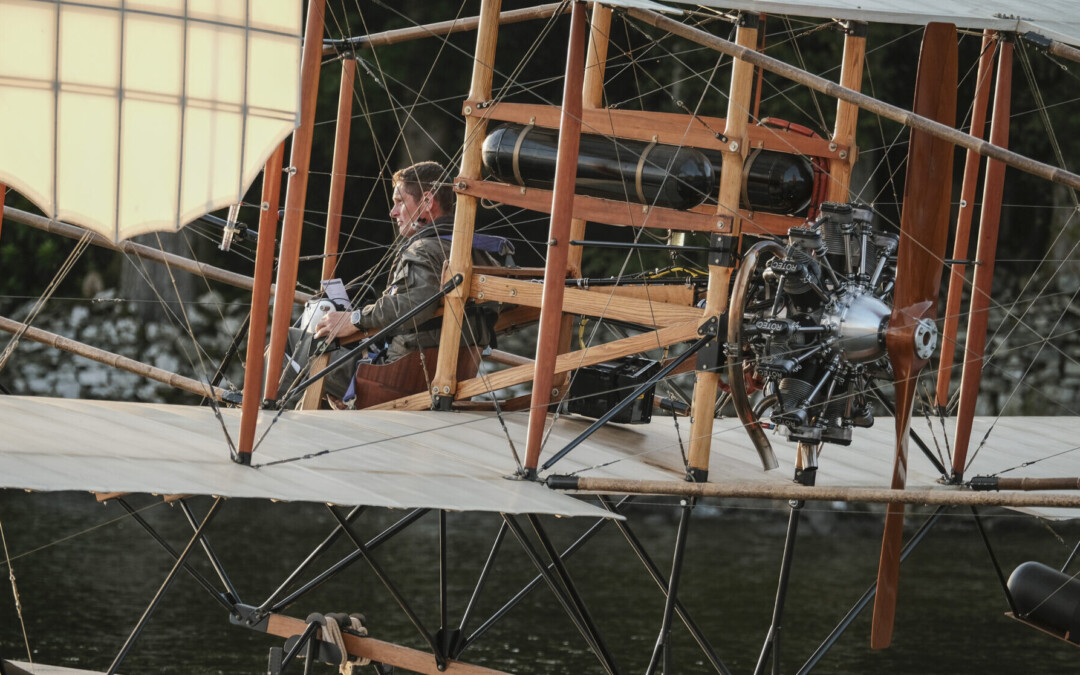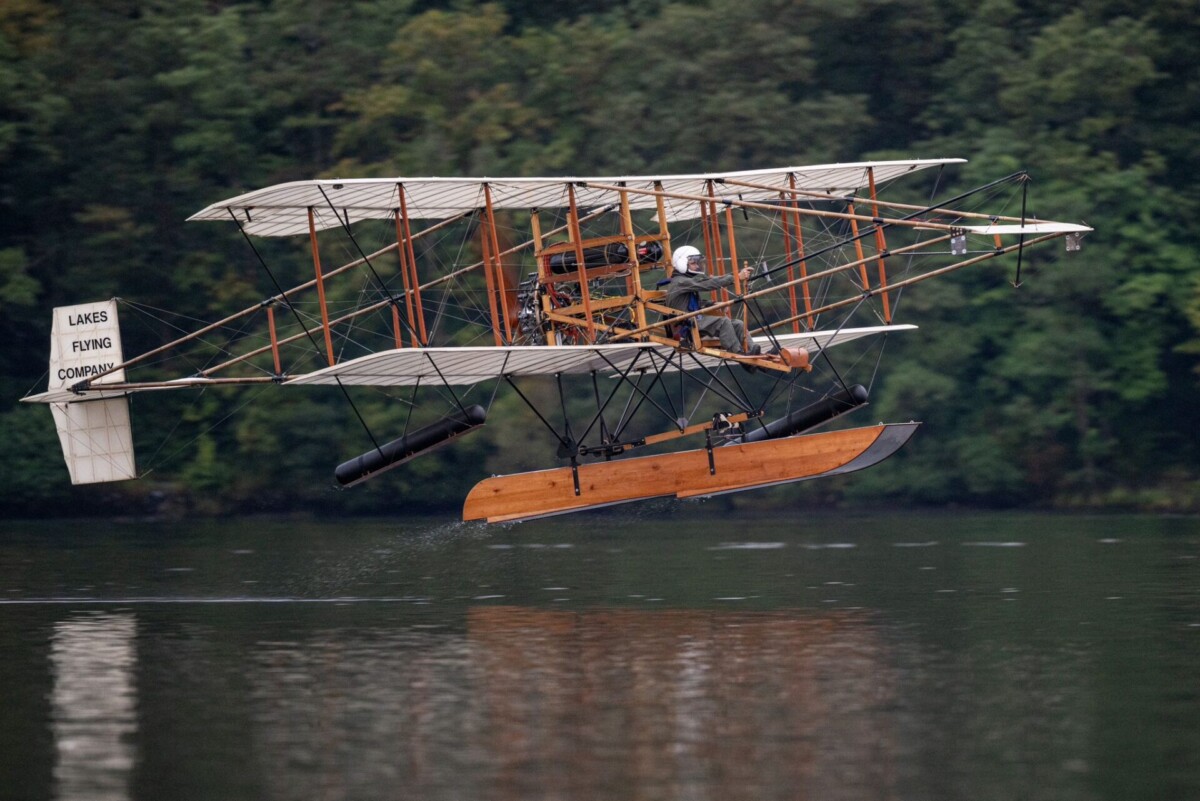The replica Waterbird was flown by Navy Wings and Royal Navy pilot Lt Cdr Chris Götke AFC. Here is his Report and a photo of him with Jane Puckering. Jane is the daughter of John Lankester Parker who was a flying instructor at Windermere 1915-1916 and test-flew the first Windermere-assembled Sunderland flying boat in 1942.
I was very privileged to be asked to fly Waterbird on Windermere by Ian Gee. It’s worth remembering that Waterbird was the first aircraft to fly off and alight back successfully on water outside of France and the USA and completed her first flight on Windermere on 25 November 1911. She is an Avro Curtiss-type aircraft and when you see her, she reminds you of the film ‘Those Magnificent Men in Their Flying Machines’!
At first sight, you are amazed and, as the aviator, slightly apprehensive as a 1911 plane is not the run of the mill machine. Especially when you climb up between the bamboo structure to sit in the cockpit or in this case, open air seat. The only real difference from the original aircraft is that she has a more powerful modern engine. However, at the time she would have been cutting edge.
She is only cleared for straight ‘hops’ with turns to align with the wind.
Waterbird has conventional ailerons on the outboard top surface of the wing, however, they are small and do not have a huge deflection giving limited roll control. Therefore you don’t want to find any turbulence as to pick up a wing would take longer than you would most likely want. There is little dihedral so using rudder would not assist. Plus there is no side structure to the aircraft.The first flight was on the 4th September. There was no plan to fly, only to go out on the water and see how taxi trials went followed by fast runs. In the end, we did 5 hops.
She sits one wing low depending on where the wind is from, always downwind float low, but when you put the power on, the wide centre float helps level her as well as the limited ailerons. At about 18 knots the rate of acceleration doubles as the float’s step comes into play.
The canard at the front, which you use for pitch control, can go to about 70 degrees when the stick is fully back. So you set it at what you believe would be a suitable angle of attack, basically between the bamboo booms! When she lifts from the water, she pitches nose up fairly quickly as the front of the float unsticks so a lot of forward stick is required to arrest the pitch up. As a result, the first lift was the highest and I achieved around 30-40 feet by the time I levelled her. The forward canard is great as basically it is sitting on the horizon, and there is not a lot in front of you.
Then it was a case of bringing the power back from around 3600 to 3300 rpm and cruise for a minute or so and then power back to land her at around 35-40 knots. Any slower and the rear of the float comes into contact. The aim is to lift and land level.
Just before touchdown on my second hop a rainbow trout jumped out of the lake which was fun to see and reminded me that it is not just aircraft that can hop!
I flew her for three trips of which two were in front of the public. The plane is delightful to fly and a great privilege, especially when you think of where she sits in history and all the aircraft that developed from her.
I’m incredibly proud to fly this delightful aircraft and be a part of the wonderful team who are showing the public a key part of UK naval aviation heritage and history.


